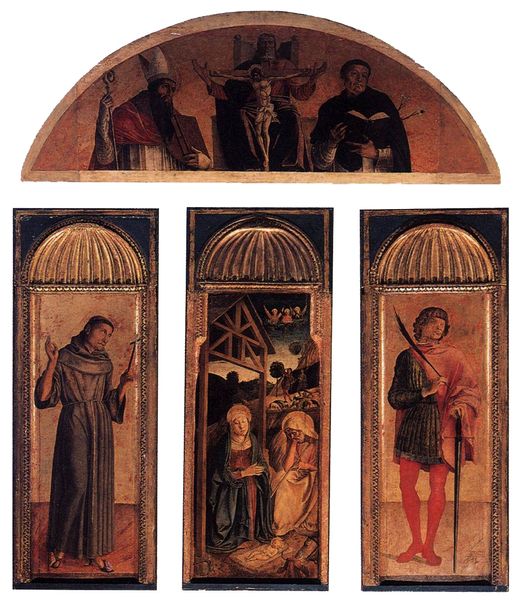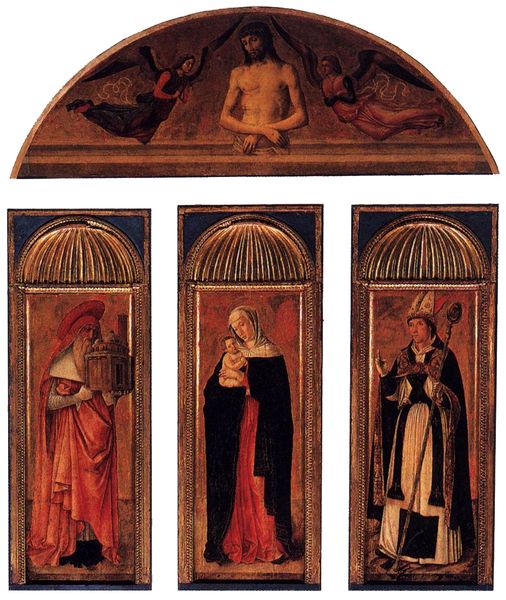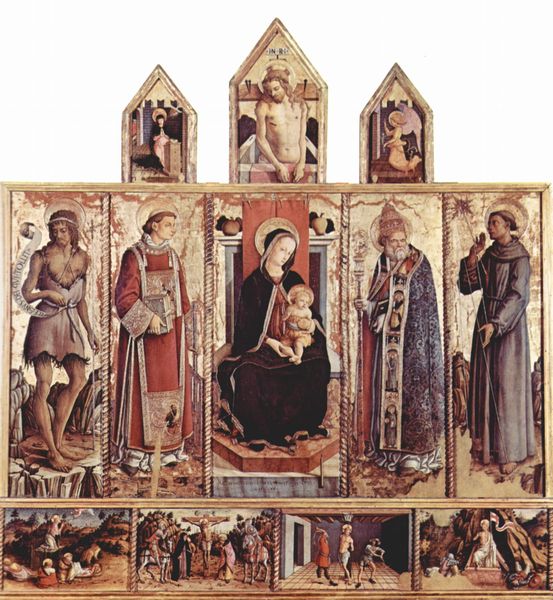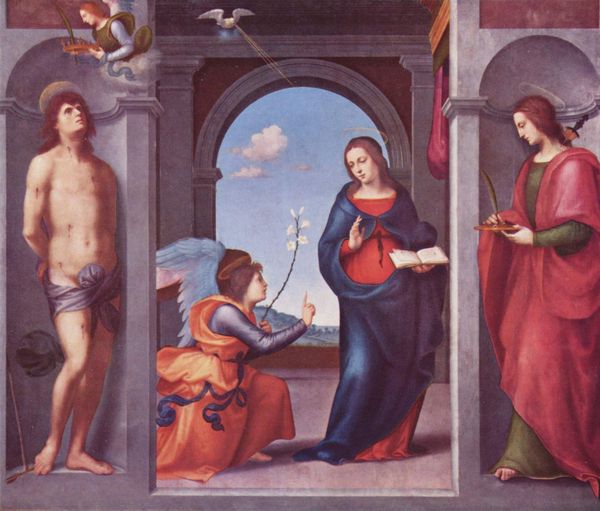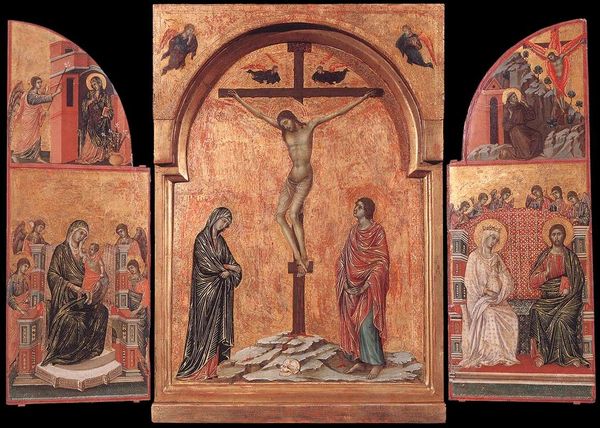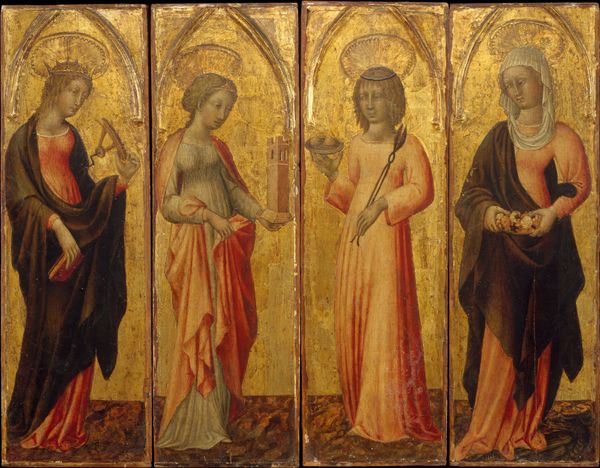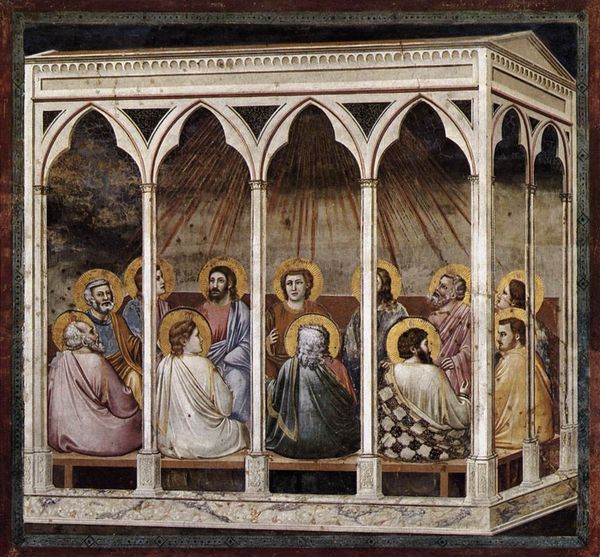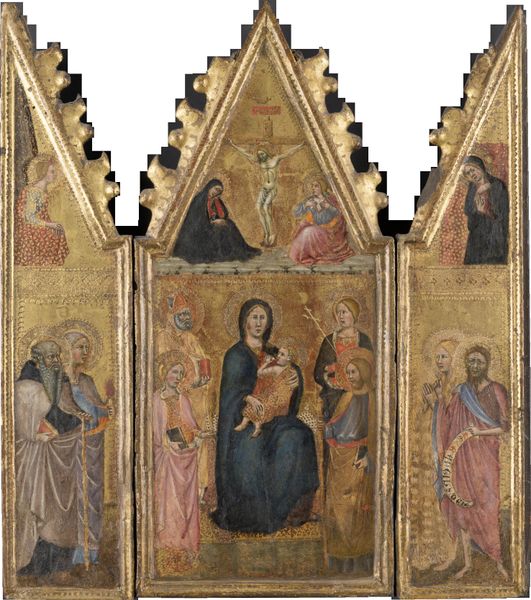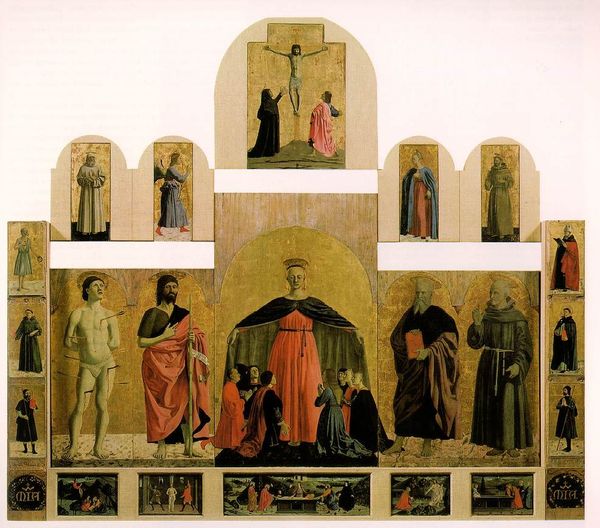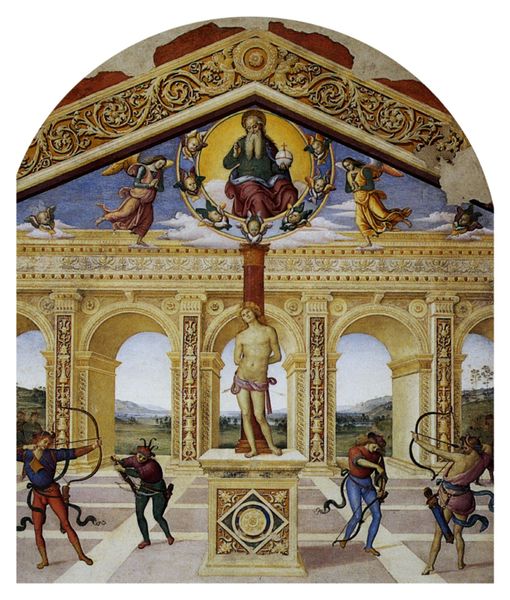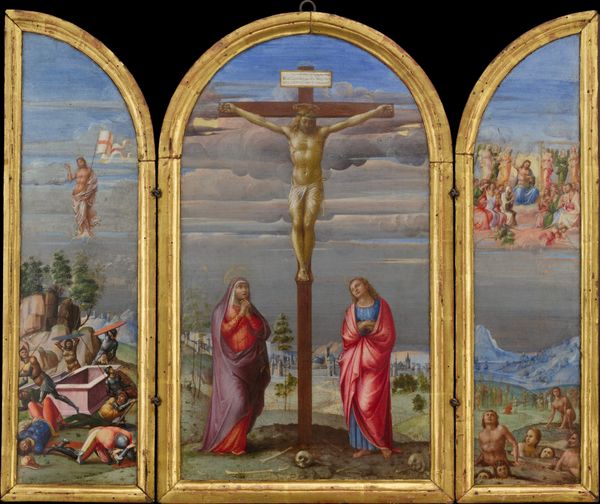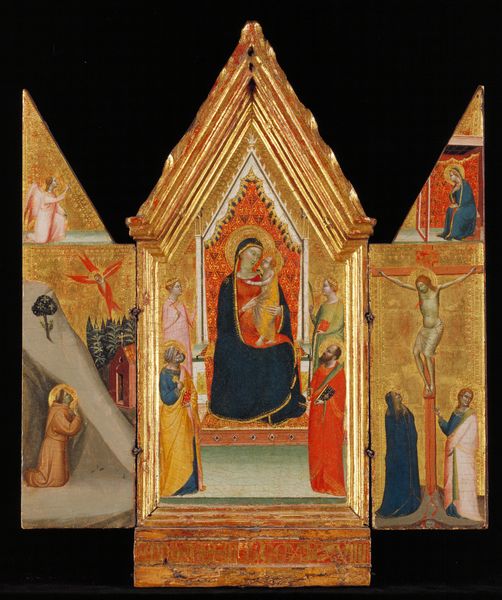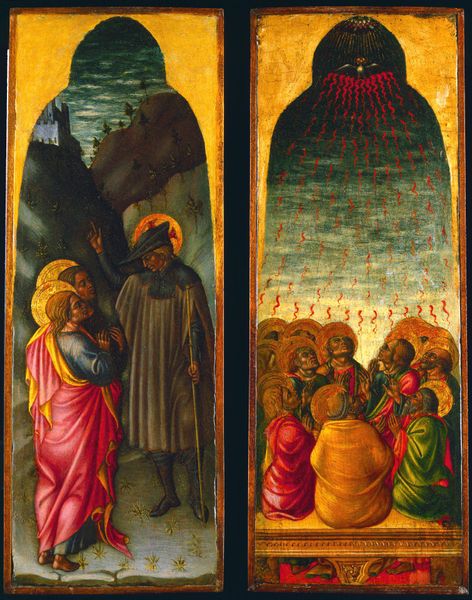
tempera, painting, oil-paint
#
tempera
#
painting
#
oil-paint
#
holy-places
#
oil painting
#
jesus-christ
#
child
#
christianity
#
history-painting
#
italian-renaissance
#
early-renaissance
#
virgin-mary
#
christ
Copyright: Public domain
Editor: This is Jacopo Bellini's "Triptych of St. Lawrence" from around 1470, done in tempera and oil paint. The symmetry is striking, especially with the dome-like structures at the top of each panel. How do you read the composition? Curator: Indeed. Focusing on its formal qualities, notice how Bellini employs a tripartite structure, a common organizational principle in Renaissance art, creating balance and harmony. Each panel operates as a self-contained unit, yet the repetition of architectural motifs encourages the eye to move laterally across the surface. What effect does the limited palette have on your experience? Editor: It feels quite restrained. The reds and browns dominate, lending a somber tone, yet the gold highlights elevate certain figures, drawing focus. What I am not sure of is if there is something more, beyond just composition. Curator: Restrained, perhaps, but efficient. Observe the modeling of the figures; light and shadow create volume, albeit within a limited range. The relative flatness contributes to the overall decorative quality. Semiotically speaking, how might the choice of a triptych format influence its reading? Editor: It implies a narrative or relationship between the panels. So while each one seems self-contained in portraying St. John, St. Lawrence and maybe St. Benedict, together, they could tell a story. Is it accurate? Curator: Consider the panels not as discrete narratives but as variations on a theme. Bellini emphasizes the inherent structural possibilities within this format, inviting contemplation. Editor: I see what you mean, the composition creates more of an expression of art, or devotional practice through forms. Curator: Precisely. The formal arrangement transcends simple depiction, aiming for a higher, more contemplative experience. Editor: Thanks, this gives me a lot to think about in terms of just analyzing an artwork’s composition, thanks for the help.
Comments
No comments
Be the first to comment and join the conversation on the ultimate creative platform.
